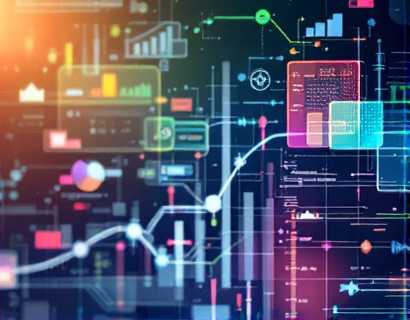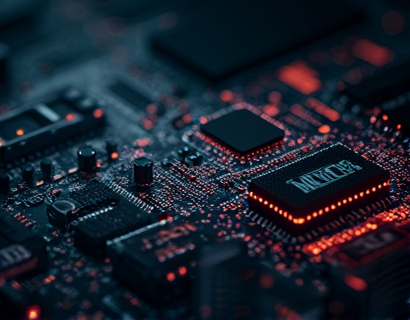Personalized AI-Driven Math Education for Children and Young Learners: Empowering Future STEM Leaders from Age 5 to 18
In the rapidly evolving landscape of education, the integration of Artificial Intelligence (AI) has opened new avenues for personalized learning experiences. One of the most impactful applications of AI in education is in the field of mathematics for children and young learners aged 5 to 18. This approach, often referred to as AI-driven personalized math education, leverages advanced algorithms and machine learning to tailor the learning process to the individual needs, strengths, and weaknesses of each student. The goal is to transform the way young learners engage with mathematics, building a strong foundation that fosters a lifelong passion for STEM subjects.
Transformative Learning Experiences
The traditional classroom setting often struggles to meet the diverse needs of students, leading to a one-size-fits-all approach that can leave many learners behind. AI-driven personalized math education addresses this challenge by creating adaptive learning paths for each student. From the earliest stages of formal education, children can benefit from an environment where the pace of learning is adjusted in real-time based on their performance. This means that a five-year-old who shows an early aptitude for numbers can advance at their own speed, while a student who requires more time to grasp a concept can receive the necessary support without feeling rushed or overwhelmed.
Interactive problem-solving is a cornerstone of this personalized approach. AI systems present students with a variety of problems that are not only tailored to their current skill level but also designed to engage and challenge them. These problems can range from simple arithmetic operations for younger children to complex algebraic equations for older students. The AI continuously assesses the student's understanding and adjusts the difficulty and type of problems accordingly, ensuring that the learning process remains both challenging and achievable.
Engaging Resources and Interactive Tools
To make math learning enjoyable and effective, AI-driven platforms incorporate a wide range of engaging resources and interactive tools. For younger learners, this might include colorful animations, gamified exercises, and interactive stories that incorporate mathematical concepts. These resources are designed to capture the attention of young minds and make learning feel like play. For example, a five-year-old might solve math problems by helping a virtual character collect items or complete tasks, thereby reinforcing their understanding through practical application.
As students progress, the resources become more sophisticated, introducing visual aids such as graphs, charts, and dynamic simulations. These tools help older students visualize complex concepts, making abstract ideas more tangible. For instance, a high school student learning about calculus can use interactive graphs to explore the behavior of functions, see the effects of changing variables, and gain a deeper intuitive understanding of derivatives and integrals.
Building Confidence and Fostering a Love for Learning
One of the most significant benefits of AI-driven personalized math education is its ability to build confidence in students. Traditional math education often leaves students feeling inadequate or anxious, especially those who struggle with the subject. Personalized learning systems, however, focus on progress and improvement rather than competition. Students receive immediate feedback on their work, which helps them understand their mistakes and learn from them without the fear of failure. This positive reinforcement system encourages students to take risks and view challenges as opportunities for growth.
Moreover, the personalized nature of the learning experience ensures that each student receives the support they need to succeed. For a young learner who is just starting to recognize numbers, the system might provide extra practice with counting and basic addition. For a student who is eExcelling, the AI can introduce more advanced topics and encourage them to explore mathematical concepts beyond the curriculum. This tailored approach helps students develop a sense of accomplishment and a genuine interest in math, laying the groundwork for a lifelong passion for STEM.
Enhancing Academic Performance and Preparing for STEM Careers
The impact of AI-driven personalized math education extends beyond the classroom, significantly enhancing academic performance and preparing students for future success in STEM fields. By addressing individual learning gaps and reinforcing key concepts, these systems help students achieve higher levels of proficiency in mathematics. Research has shown that students who use personalized learning tools consistently demonstrate improved test scores and a better understanding of mathematical principles.
Furthermore, a strong foundation in math is crucial for success in STEM disciplines such as science, technology, engineering, and mathematics. As students progress through their education, the complexity of these subjects increases, and a solid math background becomes increasingly important. AI-driven personalized math education ensures that students are well-prepared to tackle advanced topics in high school and beyond, whether they are pursuing a degree in engineering, computer science, or any other STEM field.
Adaptive Learning and Continuous Improvement
The AI algorithms used in personalized math education are not static; they continuously learn and adapt based on student interactions. This means that the system becomes more effective over time, providing even more targeted and efficient learning experiences. The AI analyzes vast amounts of data to identify patterns in student performance, pinpointing areas where additional support is needed and adjusting the curriculum accordingly. This dynamic approach ensures that no student is left behind and that each learner receives the most beneficial educational experience possible.
Teachers and educators can also benefit from the insights provided by these AI systems. Dashboards and reports offer valuable information about student progress, helping educators to identify trends, intervene early when necessary, and tailor their teaching strategies to better support their students. This collaboration between AI and human educators creates a powerful synergy that enhances the overall quality of math education.
Inclusive and Accessible Education
Personalized AI-driven math education is not only effective but also inclusive and accessible. Students with different learning styles and needs can benefit equally from these systems. For example, visual learners can engage with interactive graphs and animations, while kinesthetic learners can participate in hands-on activities that reinforce mathematical concepts. Additionally, the adaptability of AI ensures that students with special educational needs receive the support they require to succeed, breaking down barriers and promoting equal opportunities in education.
Accessibility is another key advantage. With the rise of online learning platforms, students from various backgrounds and locations can access high-quality math education regardless of their geographical constraints. This democratization of education ensures that every child, regardless of their socio-economic status, has the opportunity to develop a strong foundation in math and pursue their interests in STEM.
Challenges and Considerations
While the potential of AI-driven personalized math education is immense, it is important to acknowledge and address certain challenges. One of the primary concerns is the digital divide, where not all students have equal access to the technology required for these systems. Ensuring that all students, especially those from underprivileged backgrounds, can benefit from personalized learning requires concerted efforts from governments, educational institutions, and technology providers to bridge this gap.
Another consideration is the quality and accuracy of the AI algorithms. The effectiveness of personalized learning depends on the sophistication and reliability of the underlying technology. Continuous research and development are necessary to refine these systems, ensuring that they provide accurate and beneficial learning experiences. Additionally, privacy and data security must be prioritized to protect student information and maintain trust in these educational tools.
Conclusion
AI-driven personalized math education represents a revolutionary approach to learning, offering unparalleled opportunities for students aged 5 to 18 to excel in mathematics and STEM fields. By providing adaptive, engaging, and inclusive learning experiences, these systems not only enhance academic performance but also foster a deep and lasting appreciation for math and science. As technology continues to advance, the potential for even more innovative and effective educational tools grows, promising a future where every child can reach their full potential in the world of STEM.










































